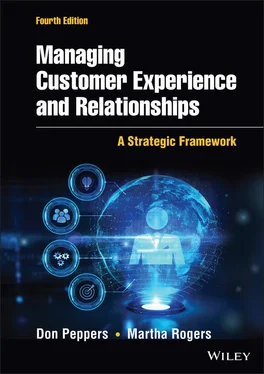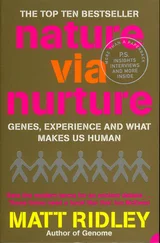The central purpose of managing customer relationships and experiences is for the enterprise to focus on increasing the overall value of its customer base—and customer retention is critical to its success.
While enterprises are experimenting with a wide array of technology and software solutions from different vendors to satisfy their customer-driven needs, they are learning that they cannot depend on technology alone to do the job. Before it can be implemented successfully, managing customer relationships individually requires committed leadership from the upper management of the enterprise and wholehearted participation throughout the organization as well. Although customer strategies are driven by new technological capabilities, the technology alone does not make a company customer-centric. The payoff can be great, but the need to build the strategy to get, keep, and grow customers is even more important than the technology required to implement that strategy.
The foundation for an enterprise focused on building its value by building the value of the customer base is unique: Establish relationships with customers on an individual basis, then use the information gathered to treat different customers differently and increase the value of each one to the firm.
The foundation for an enterprise focused on building its value by building the value of the customer base is unique: Establish trustable relationships with customers on an individual basis, then use the information gathered to treat different customers differently and increase the value of each one to the firm.
The firms that are best at building customer value are not the ones that ask, “How can we use new technologies to get our customers to buy more?” Instead they are the companies that ask, “How can we use new technologies to deliver more value to our customers?”
WHAT IS A RELATIONSHIP? IS THAT DIFFERENT FROM CUSTOMER EXPERIENCE?
What does it mean for an enterprise and a customer to have a relationship with each other? Do customers have relationships with enterprises that do not know them? Can the enterprise be said to have a relationship with a customer it does not know? Is a relationship possible if the company knows the customer and tailors offers and communications, remembers things for the customer, and deliberately builds customer experience—even if the customer is not aware of a relationship? Is it possible for a customer to have a relationship with a brand? Perhaps what is thought to be a customer's “relationship with a brand” is more accurately described as the customer's attitude or predisposition toward the brand. This attitude is a combination of impressions from actual experiences with that brand, as well as what one has heard about the brand from ads (company-originated communication), from news, and from others (comments from friends and ratings by strangers). Experts have studied the nature of relationships in business for many years, and there are many different perspectives on the fundamental purpose of relationships in business strategies.
This book is about managing customer relationships and experiences more effectively in the 21st century, which is governed by a more individualized approach. The critical business objective can no longer be limited to acquiring the most customers and gaining the greatest market share for a product or service. Now that it's possible to deal individually with separate customers, the business objective must include establishing meaningful and profitable relationships with, at the least, the most valuable customers, and making the overall customer base more valuable. Technological advances during the last quarter of the twentieth century have mandated this shift in philosophy.
Managing the customer relationship is all about what the company does, and customer experience is what the customer feels like as a result.
In short, the enterprise strives to get a customer, keep that customer for a lifetime, and grow the value of the customer to the enterprise. Relationships are the crux of the customer-strategy enterprise. Relationships between customers and enterprises provide the framework for everything else connected to the customer-value business model, even if the customer is not aware of the relationship. After all, the customer is aware of what they experience with the company. In fact, we could say that managing the customer relationship is all about what the company does, and customer experience is what the customer feels like as a result . The exchange between a customer and the enterprise becomes mutually beneficial, as customers give information in return for personalized service that meets their individual needs. This interaction forms the basis of the Learning Relationship, based on a collaborative dialogue between the enterprise and the customer that grows smarter and smarter with each successive interaction. 8
Throughout this book, we refer to customers in a generic way. To some, the term will conjure up the mental image of shoppers. To others, those shoppers are end users or consumers, and the customers are upstream businesses in the distribution chain—the companies that buy from producers and either sell directly to end users or manufacture their own product. In this book, customer refers to the constituents of an organization, whether it's a business-to-business (B2B) customer (which could mean the purchasing agent or user at the customer company, or the entire customer company) or business-to-consumer (B2C) customer (an individual or a family/household)—or, for that matter, a hotel patron, a hospital patient, a charitable contributor, a voter, a university student or alumnus, a blood donor, a theme-park guest, and so on. That means the competition is anything a customer might choose that would preclude choosing the organization that is trying to build a relationship with that customer. The word customer includes both current and prospective buyers and users.
How to Think about Customer Experience
In our view, any useful definition of customer experience should be based on straightforward language, while at the same time clearly differentiating the term from all the other marketing terms and buzzwords, such as customer service, brand preference, customer satisfaction, CRM, or customer loyalty. (See Chapter 3for a deeper dive into customer experience.)
Customer experience is the sum total of a customer's individual interactions with a product or company, over time.
Individual means that we are talking about each different customer's own individual perception or impression of the experience. What you intend to provide a customer is not nearly so important as how the customer perceives what you provide.
Interactions occur in addressable or reciprocal channels, that is, outside of mass media. Marketing campaigns, taglines, and brand messages may be important, but they aren't interactions, so they lie outside the domain of customer experience. By contrast, improving your mobile app by, for instance, embedding voice or chat connections into it would definitely improve your customer experience. Similarly, when a company makes it easier for a prospect to find information about its product, that company is improving the customer experience even though the prospect may never actually become a customer.
When we talk about customer experience, we are only including direct contact. On the one hand, the interactions a customer has in person or online with other people or companies about a brand, product, or company are not really part of the customer experience. On the other hand, how your company actually engages with customers and prospects within various social channels is a direct interaction, and thus part of the customer experience.
Читать дальше












